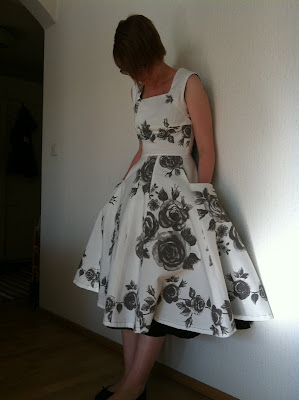Millefiori-technique with Fimo-acrylics
Okay, first things first with this technique. You'll need a fridge, something to form it with (clay tools or thing you happen to have in your kitchen, like cocktail sticks and your rollling pin), and an oven. The mass needs to be heated up in order to become hard.
You can use many types of acrylic masses for this technique, since there seems to be quite a lot of brands around. The ones that seem easiest to find around stores here in Turku are Cernit and Fimo. However, there seems to be a difference between brands, regarding the plasticity of the mass itself. Fimo, at least, is much more temperature stable than Cernit. This means that the mass doesn't "smear" as much and doesn't get too sticky and get stuck to things (read: you, the tools, the sheet of baking paper you use to protect your table...). It also means that you can use it for longer without it becoming too "droopey" and ruin the thing you're creating.
It helps if you can put it in the fridge a short while before you start cutting into it for the Millefiori-pieces. It will ensure that the "tube" you're cutting from won't get distorted.
Oh, and be prepared to feel like a kid playing with Play-dough...
Since I didn't have enough mass to start making beads, I tried a technique in which you coat metal buttons with it and then put the Millefiori-cuttings on it.
I must say, the buttons I made look really ... well, psychedelic to be honest. My Mom would use the words "they cause you headaches".
Do you agree?
You can use many types of acrylic masses for this technique, since there seems to be quite a lot of brands around. The ones that seem easiest to find around stores here in Turku are Cernit and Fimo. However, there seems to be a difference between brands, regarding the plasticity of the mass itself. Fimo, at least, is much more temperature stable than Cernit. This means that the mass doesn't "smear" as much and doesn't get too sticky and get stuck to things (read: you, the tools, the sheet of baking paper you use to protect your table...). It also means that you can use it for longer without it becoming too "droopey" and ruin the thing you're creating.
It helps if you can put it in the fridge a short while before you start cutting into it for the Millefiori-pieces. It will ensure that the "tube" you're cutting from won't get distorted.
Oh, and be prepared to feel like a kid playing with Play-dough...
Since I didn't have enough mass to start making beads, I tried a technique in which you coat metal buttons with it and then put the Millefiori-cuttings on it.
 |
| Normal boring metal buttons getting coated with black. |
 |
| Making the Millefiori "tube". |
 |
| Close-up on the tube itself. After you've placed the individual parts as you want them, you roll the tube until it gets thinner. |
 |
| This many button I had time and mass enough to coat. |
Do you agree?



Comments
Post a Comment